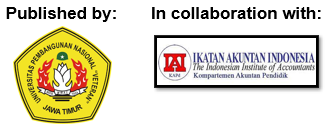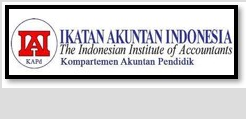Sustainable Capital Budgeting: Assessing Long-Term Effects Beyond Profitability
DOI:
https://doi.org/10.33005/jasf.v8i1.581Keywords:
circular economy, composite indicators, ESG, inclusive development, multidimensional assessment, sustainability evaluationAbstract
Purpose: This research seeks to create and implement a multidimensional scoring mechanism for assessing sustainability initiatives across several sectors. The research aims to transcend conventional financial measurements by incorporating economic, environmental, social, and governance (EESG) factors, thereby providing a more comprehensive framework for project evaluation.
Method: This study employs a literature-based conceptual framework and a composite indicator methodology to create weighted score matrices for three separate case studies: a carbon retrofit program, a regional water infrastructure enhancement, and a circular packaging business. Each case is assessed using twelve indicators and displayed on radar charts to show performance profiles and strategic trade-offs.
Findings: The results indicate that each project excels in different areas, highlighting the need for evaluations to consider the situation. The carbon retrofit argument is strong in terms of the environment and governance, while the water infrastructure project is balanced and has a big social impact. The circular packaging project earns high marks for environmental innovation and community engagement, despite not generating as much revenue. Radar charts are a good way to show these profiles, which helps with clear decision-making and comparing different sectors.
Novelty/Value: This study advances theory by transforming EESG dimensions into a versatile, reproducible framework. In practice, it provides individuals involved in sustainability planning, investing, and policymaking with a tool to aid their decision-making. The model can be applied across various industries and locations, making it a versatile tool for open evaluation that focuses on driving positive change in line with global sustainability goals.
Downloads
References
Abdullah, M. F., Siraj, S., & Hodgett, R. E. (2021). An Overview of Multi-Criteria Decision Analysis (MCDA) Application in Managing Water-Related Disaster Events: Analyzing 20 Years of Literature for Flood and Drought Events. Water, 13(10), 1358. https://doi.org/10.3390/w13101358
Alkhodary, D. (2023). Integrating Sustainability into Strategic Management: a Path Towards Long-Term Business Success, International Journal of Professional Business Review: Int. J. Prof.Bus. Rev., 8(4), e01852. https://dialnet.unirioja.es/servlet/articulo?codigo=8956100
Amer, M., Daim, T. U., & Jetter, A. (2013). A review of scenario planning. Futures, 46, 23–40. https://doi.org/10.1016/j.futures.2012.10.003
Bebbington, J., & Unerman, J. (2018). Achieving the United Nations Sustainable Development Goals: An enabling role for accounting research. Accounting, Auditing & Accountability Journal, 31(1), 2–24. https://doi.org/10.1108/AAAJ-05-2017-2929
Brealey, R. A., Myers, S. C., & Allen, F. (2020). Principles of corporate finance (13th ed.). McGraw-Hill Education.
Cantele, S., Landi, S., & Vernizzi, S. (2024). Measuring corporate sustainability in its multidimensionality: A formative approach to integrate ESG and triple bottom line approaches. Business Strategy and the Environment, 33(7), 7383–7408. https://doi.org/10.1002/bse.3872
Chouaibi, S., Chouaibi, Y., and Zouari, G. (2022). Board characteristics and integrated reporting quality: evidence from ESG European companies. EuroMed Journal of Business, 17 (4): 425–447. https://doi.org/10.1108/EMJB-11-2020-0121
Cinelli, M., Coles, S. R., & Kirwan, K. (2014). Analysis of the potentials of multi-criteria decision analysis methods to conduct sustainability assessment. Ecological Indicators, 46, 138–148. https://doi.org/10.1016/j.ecolind.2014.06.011
Clark, G. L., Feiner, A., & Viehs, M. (2015). From the stockholder to the stakeholder: How sustainability can drive financial outperformance. University of Oxford.
Costanza, R., d'Arge, R., de Groot, R., Farber, S., Grasso, M., Hannon, B., ... & van den Belt, M. (1997). The value of the world’s ecosystem services and natural capital. Nature, 387(6630), 253–260. https://doi.org/10.1038/387253a0
Crace, L., & Gehman, J. (2022). What Really Explains ESG Performance? Disentangling the Asymmetrical Drivers of the Triple Bottom Line. Organization & Environment, 36(1), 150-178. https://doi.org/10.1177/10860266221079408 (Original work published 2023)
Donaldson, T., & Preston, L. E. (1995). The stakeholder theory of the corporation: Concepts, evidence, and implications. Academy of Management Review, 20(1), 65–91. https://www.jstor.org/stable/258887
Donthu, N., Kumar, S., Mukherjee, D., Pandey, N., & Lim, W. M. (2021). How to conduct a bibliometric analysis: An overview and guidelines. Journal of Business Research, 133, 285–296. https://doi.org/10.1016/j.jbusres.2021.04.070
Eccles, R. G., & Krzus, M. P. (2010). One report: Integrated reporting for a sustainable strategy. Wiley.
Eccles, R. G., Ioannou, I., & Serafeim, G. (2014). The impact of corporate sustainability on organizational processes and performance. Management Science, 60(11), 2835–2857. https://www.jstor.org/stable/24550546
Elkington, J. (1997). Cannibals with forks: The triple bottom line of 21st century business. Capstone Publishing.
Freeman, R. E. (1984). Strategic management: A stakeholder approach. Pitman.
Friede, G., Busch, T., & Bassen, A. (2015). ESG and financial performance: Aggregated evidence from more than 2000 empirical studies. Journal of Sustainable Finance & Investment, 5(4), 210–233. https://doi.org/10.1080/20430795.2015.1118917
Geoffrey Frost & James Rooney (2021). Considerations of sustainability in capital budgeting decision-making, Journal of Cleaner Production, Volume 312, 127650, https://doi.org/10.1016/j.jclepro.2021.127650.
Gibson, K., & O’Donovan, G. (2007). Corporate governance and environmental reporting: An Australian study. Corporate Governance: An International Review, 15(5), 694–710. https://doi.org/10.1111/j.1467-8683.2007.00660.x
Gibson, R., Krueger, P., & Schmidt, D. (2020). ESG rating disagreement and stock returns. Financial Analysts Journal, 76(4), 44–59. https://doi.org/10.1080/0015198X.2021.1963186
Gluch, P., & Baumann, H. (2004). The life cycle costing (LCC) approach: A conceptual discussion of its usefulness for environmental decision-making. Building and Environment, 39(5), 571–580. https://doi.org/10.1016/j.buildenv.2003.10.008
Hahn, T., & Figge, F. (2011). Beyond the bounded instrumentality in current corporate sustainability research: Toward an inclusive notion of profitability. Journal of Business Ethics, 104(3), 325–345. https://doi.org/10.1007/s10551-011-0911-0
Mardani, A., Zavadskas, E. K., Khalifah, Z., & Jusoh, A. (2015). A review of multi-criteria decision-making applications to solve energy management problems: Two decades from 1995 to 2015. Renewable and Sustainable Energy Reviews, 71, 216–256. https://doi.org/10.1016/j.rser.2016.12.033
Mathath, N., Kumar, V., & Balasubramanian, G. (2024). The effect of Environmental, Social, and Governance disclosure on cost of debt: A life-cycle perspective. Managerial and Decision Economics, 45(4), 1883–1893. https://doi.org/10.1002/mde.4105
Okoli, C., & Pawlowski, S. D. (2004). The Delphi method as a research tool: An example, design considerations, and applications. Information & Management, 42(1), 15–29. https://doi.org/10.1016/j.im.2003.11.002
Raworth, K. (2017). Doughnut economics: Seven ways to think like a 21st-century economist. Chelsea Green Publishing.
Rendtorff, J.D. (2023). Responsible Business and Integrated Stakeholder Reporting: Towards a Stakeholder Model for Integrated Reporting of ESG and SDG. In: Kacanski, S., Kabderian Dreyer, J., Sund, K.J. (eds) Measuring Sustainability and CSR: From Reporting to Decision-Making. Ethical Economy, vol 64. Springer, Cham. https://doi.org/10.1007/978-3-031-26959-2_6
Ruggeri, M., Vinci, G., Ruggieri, R. and Savastano, M. (2025), Facing the Risk of Greenwashing in the ESG Report of Global Companies: The Importance of Life Cycle Thinking. Corp Soc Responsib Environ Manag, 32: 4216-4234. https://doi.org/10.1002/csr.3178
Ruoxin Yan & Yijie Zhang, (2022). The Introduction of NPV and IRR, Proceedings of the 2022 7th International Conference on Financial Innovation and Economic Development (ICFIED 2022). https://doi.org/10.2991/aebmr.k.220307.241
Saaty, T. L. (1980). The Analytic Hierarchy Process. McGraw-Hill.
Saltelli, A., Ratto, M., Andres, T., Campolongo, F., Cariboni, J., Gatelli, D., ... & Tarantola, S. (2008). Global sensitivity analysis: The primer. John Wiley & Sons.
Schaltegger, S., & Burritt, R. (2010). Sustainability accounting for companies: Catchphrase or decision support for business leaders? Journal of World Business, 45(4), 375–384. https://doi.org/10.1016/j.jwb.2009.08.002
Schaltegger, S., Lüdeke-Freund, F., & Hansen, E. G. (2012). Business cases for sustainability: The role of business model innovation for corporate sustainability. International Journal of Innovation and Sustainable Development, 6(2), 95–119. https://doi.org/10.1504/IJISD.2012.046944
Schaltegger, S., Gibassier, D., & Zvezdov, D. (2013). Environmental management accounting: The influence of contextual factors. Journal of Cleaner Production, 41, 1–10. https://doi.org/10.1016/j.jclepro.2012.10.010
TEEB. (2010). The Economics of Ecosystems and Biodiversity: Ecological and Economic Foundations. Earthscan.
Tranfield, D., Denyer, D., & Smart, P. (2003). Towards a methodology for developing evidence‐informed management knowledge by means of systematic review. British Journal of Management, 14(3), 207–222. https://doi.org/10.1111/1467-8551.00375
UNDP. (2020). Human Development Report 2020: The Next Frontier – Human Development and the Anthropocene. United Nations Development Programme.
UNEP. (2018). Natural Capital Accounting and Valuation of Ecosystem Services. United Nations Environment Programme.
Walker, B., Holling, C. S., Carpenter, S. R., & Kinzig, A. (2004). Resilience, adaptability, and transformability in social–ecological systems. Ecology and Society, 9(2), 5. https://www.jstor.org/stable/26267673
Walker, B., & Salt, D. (2006). Resilience thinking: Sustaining ecosystems and people in a changing world. Island Press.













